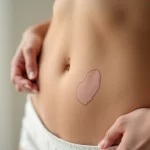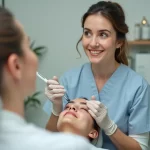Actinic keratosis, often referred to as AK, is a widespread dermatological concern that impacts countless individuals across the globe. If you’ve arrived at this article, chances are you’re in search of comprehensive details about actinic keratosis, including its ICD-10 code, symptoms, and the available treatment choices. Your quest ends here, as we embark on an exploration of this skin condition, delivering valuable information to you in a conversational and enlightening manner.
What is Actinic Keratosis?
Actinic keratosis is a dermatological condition characterized by the development of rough, scaly patches on the skin. These patches, also known as solar keratoses or senile keratoses, are primarily caused by prolonged exposure to ultraviolet (UV) rays from the sun or tanning beds. While actinic keratosis is considered a precancerous lesion, it can progress to squamous cell carcinoma if left untreated. If you’re concerned about actinic keratosis or other dermatological conditions, consider seeking dermatology services in the Phoenix area for expert evaluation and treatment.
Common Symptoms of Actinic Keratosis
Actinic keratosis often presents with noticeable symptoms that should not be ignored. Some of the common signs and symptoms include:
- Rough, Scaly Patches: Actinic keratosis typically appears as small, rough, and scaly patches on sun-exposed areas of the skin, such as the face, ears, neck, scalp, chest, backs of hands, forearms, or lips.
- Itching or Burning Sensation: Some individuals may experience itching, burning, or stinging sensations in the affected areas.
- Color Changes: The patches may vary in color, ranging from skin-toned to reddish-brown.
- Size and Texture: Actinic keratosis patches can range in size from a fraction of an inch to an inch or more. They often feel dry and gritty, similar to sandpaper.
Who is at Risk?
While anyone with significant sun exposure can develop actinic keratosis, certain factors increase the risk:
- Fair Skin: Individuals with fair skin, light eyes, and blonde or red hair are more susceptible to actinic keratosis.
- Age: The risk of developing AK increases with age, particularly after 40.
- Chronic Sun Exposure: People who spend a lot of time outdoors, especially without sun protection, are at higher risk.
- Geographic Location: Living in sunny, high-altitude areas can increase the risk.
Treatment Options for Actinic Keratosis
Fortunately, actinic keratosis is treatable, and early intervention is key to preventing its progression to skin cancer. Here are some common treatment options. If you are in need of actinic keratosis treatment services in the Phoenix area, consider exploring the options available to you:
- Topical Medications: Creams or gels containing 5-fluorouracil (5-FU) or imiquimod are often prescribed to apply directly to the affected areas. These medications work by destroying abnormal skin cells.
- Cryotherapy: In this procedure, a healthcare provider freezes the actinic keratosis patches using liquid nitrogen. The frozen tissue eventually clears AKs.
- Photodynamic Therapy: This treatment involves applying a photosensitizing agent to the skin and then exposing it to a specific type of light, which activates the agent and destroys the AK cells.
- Curettage and Electrodessication: A dermatologist may scrape off the affected skin with a curette and then use electrodessication to destroy any remaining AK cells.
- Laser Therapy: Laser treatment can target and eliminate actinic keratosis cells, promoting skin regeneration.
Conclusion
In conclusion, actinic keratosis is a frequently encountered skin condition that arises due to prolonged exposure to the sun. It is of utmost importance to acknowledge the symptoms, comprehend the risk factors, and promptly pursue treatment in order to effectively impede the advancement of actinic keratosis into skin cancer. There exist diverse treatment alternatives, hence it is advisable to seek guidance from a dermatologist to ascertain the most suitable course of action tailored to your individual circumstances. It is imperative to bear in mind that safeguarding your skin against ultraviolet rays by employing sunscreen and donning protective clothing constitutes the initial measure in preventing actinic keratosis and upholding skin well-being. If you are in need of actinic keratosis treatment services in metro Phoenix, AZ, consider exploring the options available to you.





